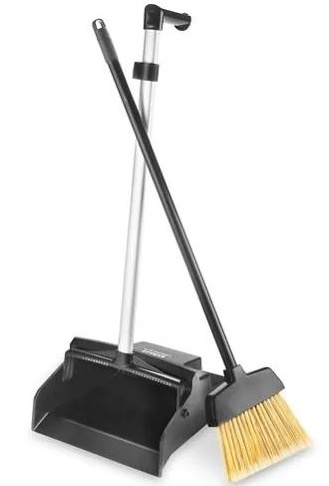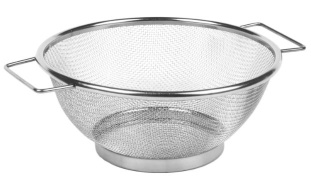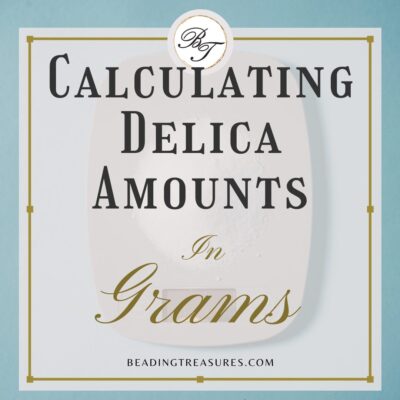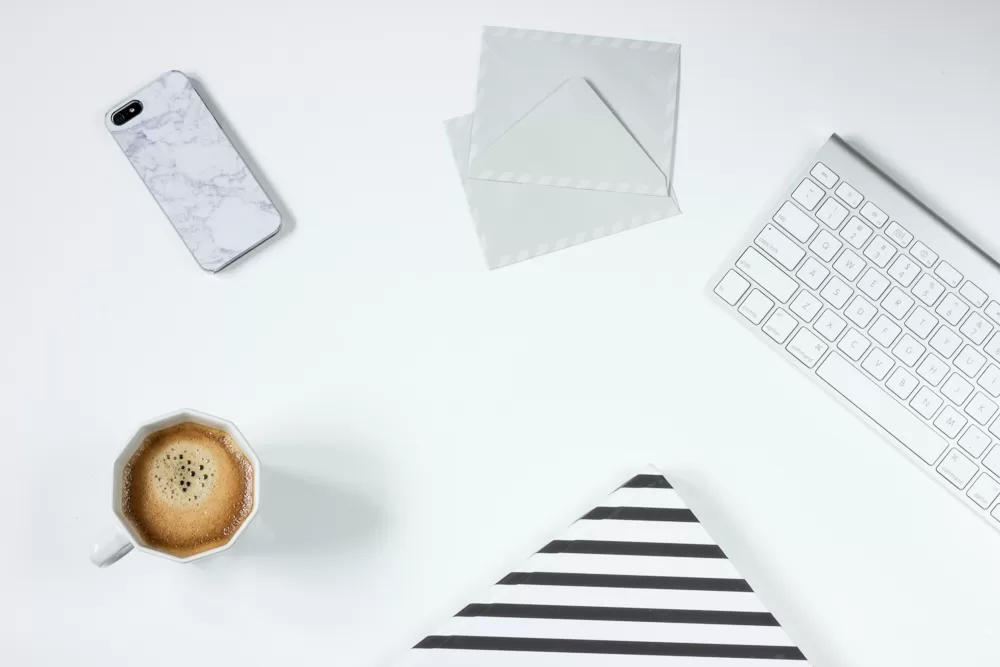Organization
Bead Soup – How to Sort & Keep your Sanity
Follow us on
Estimated reading time: 25 minutes
Don’t you just hate it when you spill your beads?
And it’s even worst when your colors get all mixed up.
It is bound to happen at some stage, whether you spill the beads, or you have frogged your work.
What you end up with is what we call in the beading world… Bead Soup.
Bead Soup is not necessarily a bad thing, some artists purposely mix bead colors together for effect, and there are loads of bead soup mixes sold in shops and online!
If you love to pick up those beads one by one and sort them, I’m in awe of your patience! This blog post will not be helpful to you.
However, if you would like to speed up the sorting process, you’ve come to the right place. Read on!
Picking up the beads
Granted, it is much worst to sort beads when you have a tray full of beads, say 40 colours.
But, it is doable…
The question is, do you want to invest the time and patience you need to sort all those beads?
Or would you rather donate or sell your bead soup online?
Let’s assume that your beading tray tipped over and some of the different colours in their respective containers spilled on the floor. After staring at the phenomenon, the dread of all bead weavers, in astonishment and dismay, you’ve decided to salvage the beads.
What’s the next best step? Well obviously, it’s to gather the beads!
But how? There are 2 main methods…
Vaccum & Hose
The title says it all.
You grab a pantyhose and cover the nozzle of the vacuum cleaner.
Use a rubber band to hold it in place tight.
Turn on the vacuum to gather the beads and then, with the nozzle over the bowl, turn the vacuum off.
This method will get rid of only the tiny debris picked up with the beads. The larger pieces of debris will remain with the beads on the outside of the hose though.
These then will be transferred to a bowl or some sort of container.
So this method then is mainly for gathering all the spilled beads in one place.
I should mention, that some vacuum cleaners are not powerful enough to lift up the beads, especially size 12/0 and larger.
If that is the case, for you then the next method might be a better option.
Fine Mesh Strainer
The best way to gather beads with this method is to use a dustpan and broom to gather and collect those errant beads.

I keep a dedicated dustpan and broom just for my beads.
Once collected, you can dump the beads into a fine mesh strainer.
I prefer to use the stand-alone strainer inside a bowl. Make sure the strainer you use is fine enough that the beads themselves will not pass through, only the debris.
The bowl is there to support the strainer and to collect all the debris passing through the mesh, separating them from the beads.

If you don’t have a strainer bowl, then any fine mesh strainer will do.
You will still get the larger debris, but the smaller ones should effortlessly sift through the strainer. Just pick the large ones out and move on to the next step, which is…
Sorting the beads
This step involves sorting the beads into their own respective colours.
It can be very hard sometimes to determine which colour is which. If that is the case then sort them into a general colour group, say reds, to be sorted again later.
What do I mean by this?
Some colours are very similar but slightly different shades or finishes. It is the ones that have the same finish but slightly different shades that make this process hard. Don’t worry, if you need a workaround for this, read on.
Bead Scoop, Bead Sorting Trays, Tweezers with a Scoop or a Teaspoon
You can use any of the above-mentioned if there are large amounts of the same colours and you just need to divvy them up.
They are used much in the same way as in gathering the like bead colours together.
You just scrape the edge of whatever tool you are using against the surface where the beads are resting and scoop them up, in some cases you may need to use your hands to encourage the beads to cooperate.
As far as picking up the beads, I much prefer the Bead Scoop. It makes the process so much easier, the beads slide easily onto the scoop. You can pick up the beads and transfer them right into your storage container.
It is one of my favourite tools! That’s why it is on my online shop… in Nedal’s Favourites section.
( Beading Treasures is not affiliated with anyone at the time of writing this post, only a link is added)
Picking up with a long needle
This process is simple. You grab the needle and start fishing out the beads, then drop them in their respective containers.
Now, why did I specify the long needle?
Simply because it is easier to hold and because you can load more beads on it at a time.
Doing this speeds up the process because you will need to make fewer trips back to the bead soup to reload the beads onto the needle.
Picking up with needle and thread
This method is similar to the one mentioned above, with a slight variation.
It differs in that the beads to be picked up will be of the same color.
Here is how it goes.
For every colour, there is a dedicated spool of thread.
It can be any thread. I prefer to use a cheap thread, usually bought from the dollar store.
I use a different colour thread for every colour of the bead, making sure it is a contrasting colour. It makes it easier to differentiate between the beads and the spools.
So how is it done?
I grab the long needle that I have threaded with, say a yellow thread.
Leaving this thread attached to the spool, I then pick up all the blue beads in my bead soup.
Once that is done I simply, transfer them with the rest of the blue beads, or keep them on the thread if those blue beads need to be sorted further.
By keeping the thread attached to the spool, I can use the spool as a temporary bead stop, plus I would be able to reuse the thread itself.
When colours are hard to tell apart
Let’s say you have two or more colours that are very similar, for example, different shades of gold.
It can be hard to differentiate between those shades when picking them out of the bead soup. So much so that you might end up mixing the wrong shade with the bead colours in your containers. And in so doing making more bead soup!
So aggravating, right?
What to do?
The best way I have found to do this is by loading the beads onto a contrasting thread. This does not have to be a beading thread. Any thread will do. Then seeing them side by side, it is easier to differentiate between the colors.
Sometimes you might need better lighting to differentiate between the finishes of the beads.
Summing up…
If you have tried the methods outlined in this post and still cannot deal with the bead soup…
It may comfort you to know that beaders fall into three categories as far as bead soup is concerned.
Some love it and enjoy the whole process, some find it annoying but will sort the beads anyway. And some hate it with such a passion that they would pay someone (usually their kids) to do it, sell the bead soup online, or donate the whole mess.
For now, I’m happy to sort my bead soup stash after completing each tapestry, barring any accidents (usually involving my cat) so it does not accumulate and become a daunting task.
How do you tackle your bead soup?
Do you have a better method? Write to me in the form below!
If you enjoyed this post…
You might also like to read these posts too:
lATEST POSTS
Best Way to Weigh Your Beads
How best to go about weighing the beads in your stash before purchasing more for[...]
Dec
How BT is Helping You to Weave Large Bead Loom Tapestries
All things beading, bead looming large tapestries and digital planning for beaders.
Mar
Calculating Delica Amounts in Grams
Typically when you purchase a pattern you need to figure out how much every bead[...]
Mar
Hi there! I’m Nedal.
I created Beading Treasures to make information about beading large tapestries more accessible, and in doing so encouraging creating of this amazing art form.
Weaving big can seem intimidating but by using some techniques it is totally doable, no more than that it is really enjoyable!
If you’ve found this blog helpful, please support me by choosing the affiliate products on my blog and following me on my social platforms.
Don’t forget to check out the shop.
Thank you!
Nedal Douaihy, Artist & Founder









